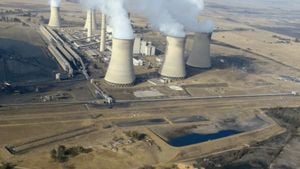Taiwan Semiconductor Manufacturing Company (TSMC) is facing construction delays for its much-anticipated second specialty wafer fabrication plant located in Kumamoto, Japan. Initially projected to commence construction by March 2025, the company has now revised its timeline, indicating the groundbreaking will take place within the year 2025 instead.
This change was reported by local media, including the Kumamoto Nichinichi Shimbun and TBS News, indicating TSMC's proactive stance to adapt to the dynamic nature of the global semiconductor market. While the construction timeline has shifted, the operational launch of the new facility remains unchanged, still set to begin production by the end of 2027.
The new plant will comprise approximately 321,000 square meters of land adjacent to TSMC's first factory, which is already operational and producing chips using 28/22nm and 16/12nm technologies. This first plant has reached monthly production capacity figures of around 55,000 wafers.
TSMC's decision to invest significantly—approximately 2.1 trillion yen (about 619 billion Malaysian Ringgit)—is indicative of its commitment to bolster semiconductor manufacturing amid rising global demand. The expected output from both the first and second plants is likely to exceed 100,000 wafers per month, with the second facility focusing on newer 6/7nm technologies. Local authorities note this is aligned with Japan's resurgence as a semiconductor industry powerhouse, especially within the Kyushu region.
The significance of this expansion cannot be overstated. According to recent patterns evidenced by the Kyushu Economic Bureau, semiconductor output for this region is projected to reach 1.313 trillion yen (approximately 387 billion Malaysian Ringgit) for 2024, reflecting sustained growth for four consecutive years and hinting at near-record figures.
This construction is not merely about meeting current demands; it’s also about positioning TSMC firmly for future challenges and market shifts. Given the volatility of the semiconductor industry, the delay may serve to allow TSMC to strategically align its resources and capabilities to cater to future needs. It serves as yet another reminder of the fragility and rapid evolution of tech manufacturing, where companies must adapt quickly to remain competitive.
While TSMC wrestles with these construction delays, their strategic vision remains intact. With the first plant already contributing to production numbers, stakeholders are keeping a watchful eye on the developments, fully aware of the increasing reliance on semiconductor technologies worldwide. This dynamic continues to shape not just businesses but entire national economies, each vying for dominance in the high-stakes semiconductor market.
Even though the change in construction timelines is noteworthy, one fact remains crystal clear: TSMC is committed to its investment plans. Ambitious initiatives like these promise to deliver substantial benefits for the local economy and contribute to global supply chains once operational.
The road to completion is still long, yet TSMC's determination to establish its footprint within Japan's semiconductor sector will likely pay off—metaphorically laying the groundwork for future advancements, innovation, and economic growth.



